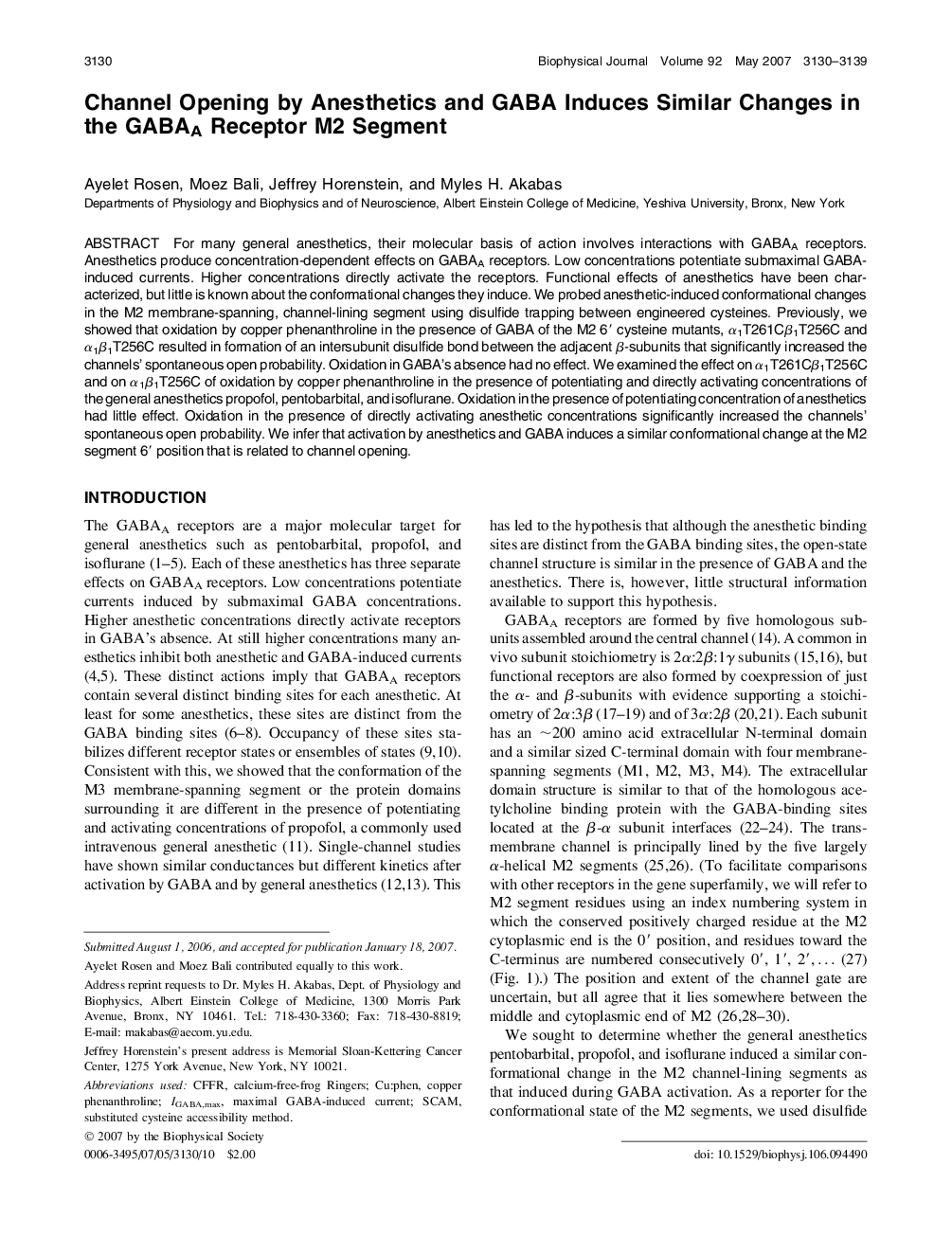| Article ID | Journal | Published Year | Pages | File Type |
|---|---|---|---|---|
| 1957922 | Biophysical Journal | 2007 | 10 Pages |
For many general anesthetics, their molecular basis of action involves interactions with GABAA receptors. Anesthetics produce concentration-dependent effects on GABAA receptors. Low concentrations potentiate submaximal GABA-induced currents. Higher concentrations directly activate the receptors. Functional effects of anesthetics have been characterized, but little is known about the conformational changes they induce. We probed anesthetic-induced conformational changes in the M2 membrane-spanning, channel-lining segment using disulfide trapping between engineered cysteines. Previously, we showed that oxidation by copper phenanthroline in the presence of GABA of the M2 6′ cysteine mutants, α1T261Cβ1T256C and α1β1T256C resulted in formation of an intersubunit disulfide bond between the adjacent β-subunits that significantly increased the channels’ spontaneous open probability. Oxidation in GABA's absence had no effect. We examined the effect on α1T261Cβ1T256C and on α1β1T256C of oxidation by copper phenanthroline in the presence of potentiating and directly activating concentrations of the general anesthetics propofol, pentobarbital, and isoflurane. Oxidation in the presence of potentiating concentration of anesthetics had little effect. Oxidation in the presence of directly activating anesthetic concentrations significantly increased the channels’ spontaneous open probability. We infer that activation by anesthetics and GABA induces a similar conformational change at the M2 segment 6′ position that is related to channel opening.
